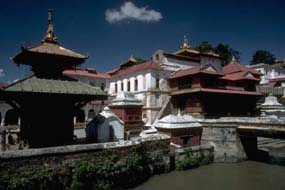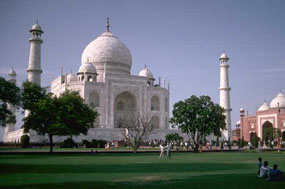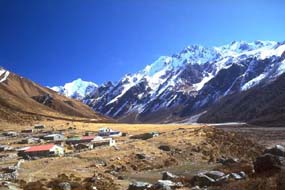Bid per person and choose your departure from Select Departure Dates below.
12 Days Cultural & Safari Experience of India and Nepal
Day 1 • Arrive Delhi
Arrive at your Deluxe accommodations. Delhi is India’s capital and a major gateway to the country. Perhaps, there is no other capital city in the world so steeped in history and legend as the Indian capital Delhi. It was the magnet which drew the Mongols, Turks, Persians, Afghans, Mughals and the British, all of whom contributed to its glorious but turbulent past. The fascination with Delhi was such that even though it was abandoned many times, its rulers returned to it again and again, rebuilding it at least seven times. Today, the twin cities of Old and New Delhi still intrigue Indians and tourists alike as the cultural and political capital of the largest democracy in the world.
Day 2 • Delhi (B,D)
Today, begin your guided exploration of Delhi, India’s capital city that sports a rich history spanning over 2,000 years. Arrive in Old Delhi and ride in a cycle rickshaw (pedi-cab) through the narrow lanes. The Old City walls wrap around Chandi Chowk, the ancient market that continues to thrive. The energy in the streets is palpable. Local men sit and sip their tea at chai stands. Next, visit Jama Masjid—the largest mosque in India, built by the Mughal Emperor Shah Jahan in the 17th century and surrounded by multiple entrances that all lead to the apex of the main worshiping deck. You will continue to Raj Ghat, the memorial of Gandhi, built at the site of his cremation on the banks of the Yamuna River. Later, visit the Sikh temple Bangla Sahib Gurudwara, second most important Sikh shrine in India, and learn about the history of this religion. Optional: While at the temple, you have the option to volunteer in the community kitchen to prepare and serve food to the visitors (the temple is visited by about a million every day), and, if you wish, you can enjoy a traditional vegetarian lunch at the temple with the community. In the afternoon, drive past India Gate and the Government Secretariat buildings on the way to Qutab Minar—the five-story victory tower which signifies the beginning of the Muslim rule in India by the first Muslim ruler Qutab-ud-din Aibak.
Day 3 • Delhi/Agra (B, D)
This morning, set out on a drive to Agra—the city of Taj Mahal. Upon arrival, check in at your hotel. Agra, once a small village on the banks of the Yamuna, was transformed by two great Mughal monarchs, Akbar and his grandson Shah Jehan, into the second capital of the Mughal Empire–Dar-ul-Khilafat, or ‘seat of the Emperor’ in the 16th & 17th centuries. A world of contrasting edifices of red sandstone and white marble, narrow galleys, bustling streets and small buggies, Agra retains the irresistible charm that made it the favorite city of the Mughals. Proceed for a visit to Agra Fort, a UNESCO World Heritage site and the stronghold of the Mughal Empire under successive generations. Built in 1565 by the great Mughal ruler Akbar, the citadel consists of marble palaces, ornate alcoves and terraced pavilions. From the ramparts of the fort, there is a lovely view of the gleaming white Taj Mahal in the distance. Later, visit the magnificent monument to love—Taj Mahal. Built by Emperor Shah Jahan, the UNESCO World Heritage Site is a memorial to his favorite wife Arjumand Bano Begum, better known as Mumtaz Mahal. The monument is considered the finest example of Mughal architecture, combining elements of Persian, Ottoman, Indian, and Islamic architectural styles.
Day 4 • Agra/Ranthambore (B, L, D)
This morning, set out on a drive to Ranthambore, home to the elusive Bengal Tiger. On arrival, check in at your hotel. The Ranthambhore National Park was once the hunting ground of Maharaja of Jaipur. In 1955, it was declared a game sanctuary; in 1980, it became a national park. But, with the commissioning of Project Tiger in 1972, it was included into the project. With the addition of neighboring Keladevi and Mansingh sanctuaries, the total area of the national park stands at 1,334 sq. km. The tigers of Ranthambhore are among the best documented and most photographed and filmed of any in India. It is also the park where a successful series of projects undertaken by the wildlife conservationists have benefited the surrounding villages through health projects, agricultural assistance and reforestation—all to deflect pressure from this isolated park.
Day 5 • Ranthambore (B, L, D)
Set off on a safari (vehicle may be shared) to experience the first signs of wildlife awakening in the park, with a good chance to spot a tiger! Ranthambore is considered by many to be one of India’s most beautiful national parks due to the picturesque ruins that dot the wildlife park. Encircled by a series of high escarpments, the forests, lakes and dry scrub that make up the park are dotted with old forts and temples, creating a wonderful atmosphere for both bird and mammal viewing amongst a landscape oozing with ancient Rajput history and Rajasthani culture. Return to the hotel for a late breakfast. Optional: While in Ranthambore, visit Dhonk—a grass root enterprise providing a sustainable livelihood to village communities and ex poacher families through the promotion of local crafts. Spend the morning with the workers and learn their crafts. In the afternoon, take another round of safari (vehicle may be shared) with a naturalist, exploring wildlife and biodiversity in the park. The local naturalist will introduce you to the flora and fauna of the park and also teach you to listen and distinguish between different alarm calls of the main prey species of the park: the tigers
Day 6 • Ranthambore/Jaipur (B,D)
This morning, set out on a drive to Jaipur, the 18th-century capital of Rajasthan. On arrival, check in at your hotel. Jaipur is also known as the ‘Pink City’ for the abundance of pink plastered stone used to build its massive forts, magnificent palaces and exquisite temples. The city which was built in 1727 A.D. by Maharaja Sawai Jai Singh II, followed a grid system which made it the only planned city of its time. A young Bengali architect Vidhyadhar Bhattacharya designed the city in accordance with Shilp Shastra—an ancient Hindu treatise on architecture. There is far more to the city than just its famous monuments, and to get a complete experience of Jaipur, one must uncover the mysteries of the bazaars and visit silversmiths, turban sellers and traditional markets.
Optional: After a day of exploration, perhaps, head to the Raj Mandir Cinema to experience the glamour of a Bollywood film (US$33 p.p.) Note: Though Bollywood movies are 3 hours in duration, we will watch it only till half time (1h30) –no translation facility available.
Day 7 • Jaipur (B,D)
This morning, visit the imposing Amber Fort. Set on a hilltop overlooking Maota Lake, the fort is an authentic example of Rajput architecture, and the Sheesh Mahal (Hall of Mirrors) is one of its more spectacular buildings. Next, we will make a brief photo stop at the Hawa Mahal (Palace of Winds). Its beehive-like structure is an interplay of red and pink sandstone, painstakingly outlined with white borders and motifs. Behind this elaborate latticed facade, the cloistered ladies of the court could watch the daily activities in the street below. In the afternoon, proceed for a city tour including Jaipur's Royal City Palace with its extravagant rooms and apartments. Later, discover one of the five astronomical observatories, Jantar Mantar, built by Maharaja Jai Singh, the founder of Jaipur. In the evening, enjoy a traditional meal with a folk dance at a local restaurant in town.
Optional alternative: Cooking demonstration and home-hosted meal. For a memorable evening affair, indulge in a gourmet experience, where you not only dine on tasteful local meals but learn to prepare them yourself. It’s a fun and interactive session that combines delicious local food and drinks with a very happy palate and some serious recipes to take home (US$80 p.p.).
Day 8 • Jaipur/Varanasi(B,D)
Early this morning, you will be transferred to the airport for your flight to the colorful, historic city of Varanasi. The ‘eternal city,’ Varanasi or Benares, is one of the most important pilgrimage sites in India, and the Ganges, which flows through the city, is believed to have the power to wash away the sins of mortals. For the pious Hindu, the city has always been a special place, and it is considered a particularly auspicious place to die, ensuring an instant routing to Heaven. Upon arrival in Varanasi, you will be met by our local representative and transferred to your hotel. Proceed to visit Sarnath, where Lord Buddha gave his first sermon. You'll see impressive stupas, a large complex of ruined monasteries and the new monastery built by the Buddhist Mahabodhi Society, which depicts the major events of Buddha's life. At Sarnath, you will have the opportunity to interact with a Buddhist Monk, learn more about the religion from a monk’s perspective and observe a small prayer ceremony. In the evening, watch an illuminated Aarti ceremony at Dasahwamedh Ghat. In this century-old ritual, the holy river is worshipped with flowers, incense, sandalwood, milk and vermilion. First, the blazing camphor lamp followed by the many flamed Aarti lamps are raised high and then arched back to the water, the dark river reflecting the golden flames as Ganges accepts the worship.
Optional: Death & Rebirth Night Walk—visit Manikarnika, the Burning Ghats, to see the most profound of Hindu rituals. Also visit a temple of Goddess Kali to know how she liberates the soul from the cycle of life and death by killing the ego (US$80 p.p.)
Day 9 • Varanasi/Delhi/Kathmandu (B)
Enjoy an early morning boat ride on the great Ganges River before heading back to the hotel for breakfast. Later, visit some of the other important sites in the city with your guide. Dotted with temples, the city's principle shrine is the Vishwanath temple, dedicated to Shiva. The temple was destroyed repeatedly during various invasions but was finally rebuilt in 1776 A.D. by Rani Ahilyabai of Indore.
In the afternoon, you will be transferred to the airport for your flight to Kathmandu via Delhi. Note: Nepal offers a visa-on-arrival facility. You need to have a valid passport, and one passport -size photo with a light background is required (the Immigration Department has not specified the size of the passport-size photo). Visa can be obtained only through payment of cash and the cost for a 15-day visa is USD 25 per person. After completing Immigration and Customs formalities, exit the airport and meet with our local representative at the arrivals area for transfer to your hotel. Kathmandu, extending over an area of 360 square km at an altitude of 1336 meters above sea level, is the largest city of Nepal, the political as well as cultural capital of the country. Kathmandu is a city where ancient traditions rub shoulders with the modern. However, it is the grandeur of the past that enchants the visitor whose gaze may linger on an exquisitely carved wooden window frame, an 18th century bronze sculpture or the spiritually uplifting stupas. Like any big city, Kathmandu has seen rapid expansion in the last decade, but despite the hustle and bustle typical of metropolitan cities, its people remain as refreshingly friendly as ever.,
Day 10 • Kathmandu (B)
This morning, start your exploration with a visit to Patan Durbar Square, the city of artistry. The city is known for its rich tradition of arts and handicrafts such as metal statues and ornate architecture. The square is mélange of old Royal Palace, artistic courtyards and pagoda temples. The former Royal Palace complex has been turned into a museum. There are three main courtyards in the palace, among which the Sundari Chowk is known for a masterpiece of stone architecture. Continue your exploration to Swambhunath. Perched on top of a conical hill is a white dome with glittering golden spire, visible from all sides of the valley for many miles. This most ancient and enigmatic of all the holy shrines in Kathmandu Valley, Swayambhunath Stupa is also known as the Monkey Temple. This place offers an excellent view of the Valley. Though the temples around the stupa suffered some minor destruction, and one of the temples beside the stupa collapsed during the 2016 earthquake, the process of reconstruction is ongoing. At Swayambhunath, watch the Tibetan pilgrimages and monk chanting prayers in their traditional cultural clothes in the monastery. End the day with a visit to Durbar Square, where the charm of old town blends well with traditional architecture in a rich cultural backdrop. One of the most unique features of this courtyard filled with temples and palaces is the temple of living goddess. Kumari is a young Shakya girl from Newar community, chosen through an ancient and mystical selection to become the human incarnation of Hindu Goddess Taleju. If you are lucky, you may get a glimpse of Kumari peeking out of an elaborately carved wooden window. The main Durbar Square is the most affected area by the 2015 earthquake. Take a walk through the Ason Market. It’s a local bazaar and well known place for buying daily requirements. A lush of crowded locals will enchant you with the daily life style.
1st Optional: Mountain flight to view Mt. Everest, the most cost-effective and popular flight for experiencing the Himalayan range. This is an hour-long flight of breathtaking views of scenic beauty of the mighty mountains. The Everest flight is a sparkling clear journey across the world’s highest peaks including Mount Everest, the world’s highest peak (8848 meters) and other ranges of Himalayas—Gauri Shankar (7134 meters), Nuptse (7855 meters), Lhotse (8516 meters), Amadablam (6812 meters), Chamlang (7319 meters), Makalu (8463 meters) and Cho Oyu (8201 meters) to name a few, including the Roof of the World, the Tibetan Plateau (US$293 p.p.)
2nd Optional: Cooking demonstration and home-hosted meal with a local family (US$33 p.p.)
Day 11 • Kathmandu (B)
This morning, explore Pashupatinath temple, a World Heritage site. It is the principal Hindu shrine in Nepal and one of the foremost temples dedicated to Shiva on the Indian subcontinent. Shiva is worshipped here as Pashupati, lord of beasts, who as protector of all living creatures is also the patron deity of Nepal. Temples, ashrams (hermitages), dharamsalas, shrines and ghats spread over a wide area along the sacred Bagmati embankment. Though Non Hindus are not allowed inside the temple, one can clearly see the structure and the activities from the eastern bank of the Bagmati River. Note: The Bagmati River flows close by and the Arya Ghat cremation grounds are located here. We strongly advise not to take photos of cremations and of bereaved families. Sadhus, sages who follow the lifestyle of Shiva, may be seen covered in ashes and loin-cloths. They ask for money in case you want to take their photos. While at Pashupatinath, you will get the opportunity to have some spiritual interaction with the Sadhus (Holy Men). In the afternoon, visit Bhaktapur Durbar Square. The best preserved of the three main medieval cities of the valley, Bhaktapur comprise some of the most breath-taking religious architecture in the entire country. Narrow, stone-paved streets snake through red brick houses, leading you to hidden temples, water sprouts and courtyards. The city proudly displays its cultural life through daily lifestyle, and artisans have been continuing traditional works like weaving, pottery and woodwork for generations. The Main attractions of this city are 55 Window Palace, Golden Gate and Lion’s Gate.
Day 12 • Depart Kathmandu (B)
This afternoon, you will be transferred to the airport for your flight home/onward.
Your Tour Includes:
- Guaranteed 2 passengers
- English speaking guides
- Historical sightseeing
- All meals: 11 breakfast, 2 lunches & 6 dinners
- Intra-India transportation
- USTOA $1 Million Travelers Assistance Program
- Deluxe hotels: 2 nights Delhi: Pullman New Delhi Aerocity • 1 night Agra: Crystal Sarovar Premiere •1 night Ranthambore: Abhayaran • 2 nights Jaipur: Sarovar Portico • 1 night Varanasi: Radisson • 3 nights Kathmandu: Hotel Himalaya
Not Included:
- International Flights into Dehli and out of Kathmandu, however we can quote for airfare upon request
- Visa Services
Important information:
A copy of your passport is required for booking purposes.
A tax and service charge of $395 per person is additional.
Offer is based on double occupancy. A single supplement of $429.- is available to those of you traveling solo, providing the minimum number of passengers has been reached.





